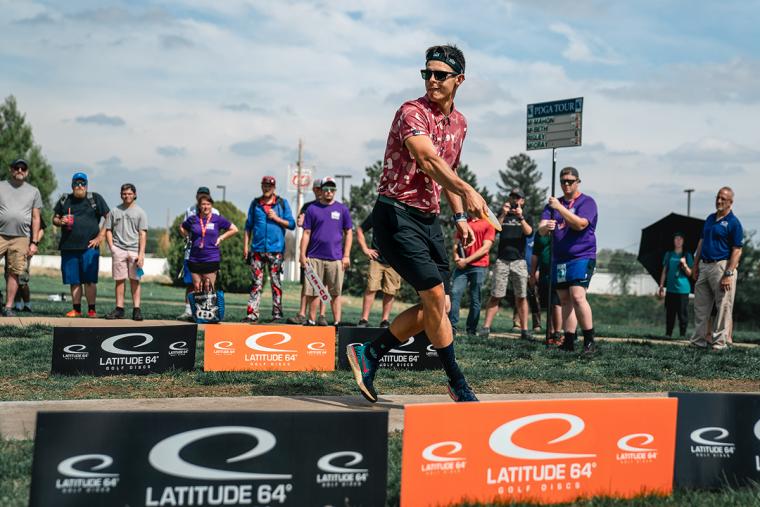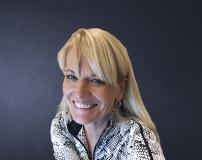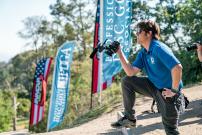

It’s a phenomenon that has led to courses reinventing themselves to bring in more users – and more income. In Canada, a course was purchased and rebranded as Rolling Greens, the first cannabis-friendly golf venue in North America. Others have partnered with health clubs for golf fitness programs, and clubhouses have expanded the availability of banquet facilities beyond just members.
Bringing more players onto the fairways has also been accomplished by enlarging the definition of golf, and by adding facilities for variations of the sport, including Disc Golf and FootGolf. Event owners in those disciplines spent some time discussing the changes afoot.
Sports Destination Management: Keeping players on courses, and bringing in new ones, is the goal of many golf venues. Are you seeing mixed use on courses, as far as bringing in your versions of the game?
Steve Hill: Yes, and for us, that has been going on for a good five, six, seven years now. Some courses have added Disc Golf on a temporary basis for weekends or one-off events, but others have made it a permanent part of the course. In fact, several of our elite-level tournaments are held on golf courses.
Laura Balestrini: Our sport is a little different in that it is always played on a golf course, and there are about 600 golf courses in the U.S. that also offer FootGolf.

SDM: Is putting in more golf alternative equipment a trend?
Hill: Mixed use is a definite trend in our sport.
SDM: Do you think there is more awareness of different types of golf?
Balestrini: If you talk to people who play golf and ask them if they’ve heard of FootGolf, about eight out of 10 of them will say they’ve heard about it or seen it. They’ll make jokes about wanting to play the bigger holes.
SDM: Is there, in your experience, more of a trend toward municipal or private courses installing new equipment?
Hill: Municipal courses generally aren’t as frequently played by traditional golfers, so often, cities are looking into ways to bring in extra revenue. Disc Golf helps with that.
Balestrini: Cities can be teaching people how to play FootGolf in a parks and rec or a P.E. program. I think that’s why you’re seeing the municipalities and the public courses putting in FootGolf. Nobody wants to lose the open space or see it sold off for housing developments. But it’s a definite mix, too. We’re seeing FootGolf at these little mom and pop courses in the middle of nowhere and those are great because otherwise, parents would have to drive their kids 50 miles to have fun. We also know that Walt Disney World has a FootGolf course, and that the Ritz Carlton has one. The population that plays golf keeps decreasing and, in many areas, not every golf resort may be full. As a result, the resorts are looking for a way to keep guests on the premises rather than having them head off property.
 SDM: Golf is a very traditional sport. Is there pushback from people who don’t want players of disc golf or FootGolf on their greens?
SDM: Golf is a very traditional sport. Is there pushback from people who don’t want players of disc golf or FootGolf on their greens?
Balestrini: It definitely comes into play. We hear about people who didn’t relish the idea of seeing a soccer ball rolling on the fairways but it’s a way to diversify and to regain the fairways they would otherwise be losing. It doesn’t become such a sore spot for the community when they realize that everyone can use the course and help it bring in money.
Hill: It’s good for golf and it’s good for disc golf. There are some traditional golfers who don’t want to share but if disc golfers can get more courses in the ground – and have them in places with manicured fairways and a nice, attentive staff – it’s definitely an advantage.
Balestrini: It’s not for every course but if people are looking for a way to add new revenue, and a lot of courses all over the country are, it’s something they should be looking at.
SDM: Is there any one thing that has led to the uptick in traditional golf courses adopting disc golf and/or FootGolf?
Balestrini: Ted Bishop, who was then the president of the PGA, was quoted as saying, “I go by the soccer fields. They are filled with kids and I want those kids on my fairway.” That kind of opened the door. Now, golf courses are realizing that all the fears they had of FootGolf players scaring away the traditional golfers were not going to come true.
Hill: One of the top manufacturers of discs, Innova Discs, is a big proponent of Disc Golf on regular golf courses. Also, we’ve seen that population density has a lot to do with it. In California, for example, they have a lot of land restrictions and it is hard to get new Disc Golf courses put in. If you can use an existing golf course for disc golf too, that’s great.
 SDM: Do you see it as good for economic impact?
SDM: Do you see it as good for economic impact?
Hill: Oh, yes. A Disc Golf course just went into a golf course on a country club not far from my house. They decided to give it a test run and it has been very successful. The pro shop is even making more money.
Balestrini: When you look at it, there are a lot of golf courses out there that are trying to diversify and stay open. They’re offering things like concerts on the greens and movie nights on the driving range.
SDM: One of the things about both your sports is the ease of access. It’s not intimidating to go out for the first time since people already feel like they have the basics.
Hill: We really think that’s one of the reasons Disc Golf is growing. It’s easy to take up since almost everyone has thrown a Frisbee in their P.E. class or on the beach with their friends. The game is easy to understand, and most recreational players won’t require lessons, coaching or camps in order to play with their friends. They just need to show up and have fun.
Balestrini: FootGolf is easy to learn. Anyone can walk and kick a ball, and I always say if they just keep kicking and walking, they can get to the hole. You can hold a beer and kick at the same time so it’s really a social sport. A pro once told me he had a bunch of women who’d played golf as a foursome and then wanted to know what else there was to do in the area. He asked them whether they wanted to try FootGolf. They all went out and he said he could hear them laughing the whole time. It’s also popular as a corporate team-building event. And something we’re also seeing is that FootGolf can be played by people of all ages. How many sports can a grandfather go out and play with his grandkids? Or maybe he goes golfing and they are playing FootGolf, but they’re all playing on the same course and having a good time. There’s not a safer place to be than on a golf course.
SDM: Adding new equipment to bring in FootGolf and Disc Golf also changes the demographic coming into golf courses.
Hill: It does. I’d say it’s a little more egalitarian now. That is something that has made it so accessible.
Balestrini: We heard from a golf pro who added in FootGolf and Disc Golf because he wanted to have something for the community to do. I see him posting on Facebook all the time about all the people who are playing and all the fun they’re having. SDM


